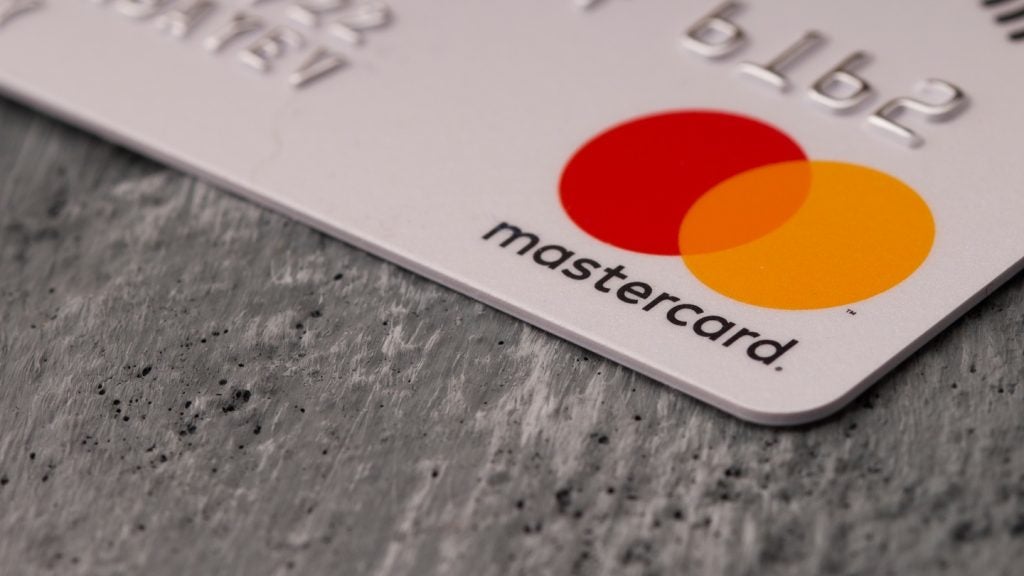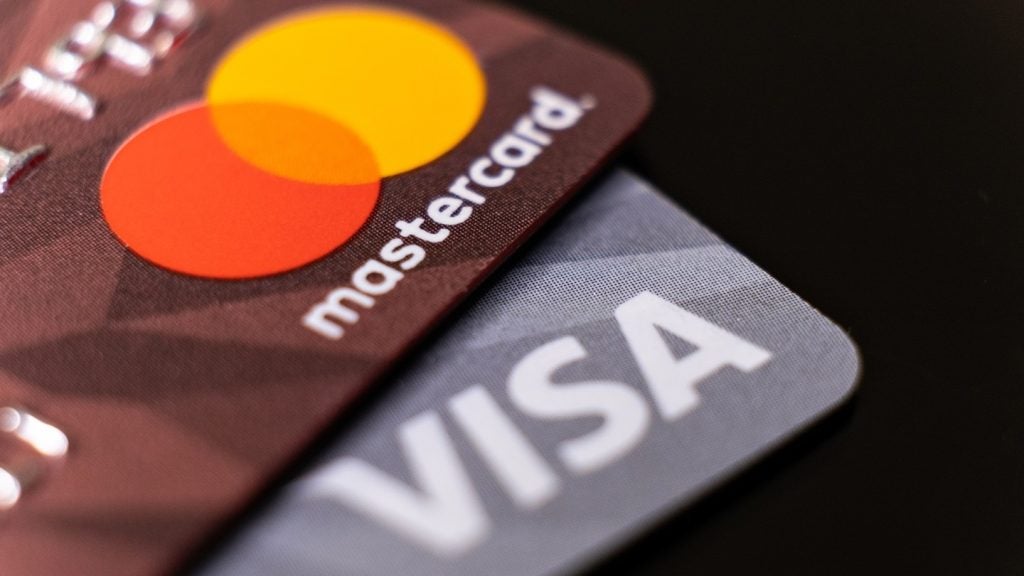Visa Canada’s senior executives Stacey Madge, Gord Jamieson and Chris Ferron discuss with Robin Arnfield the company’s key initiatives during 2017 and look ahead to set out Visa’s key priorities for 2018
Formerly SVP, International Banking at Scotiabank where she was responsible for retail and small business banking across 30 Latin American and Caribbean countries, Visa Canada’s Country Manager and President Stacey Madge joined the firm in April 2017.

Access deeper industry intelligence
Experience unmatched clarity with a single platform that combines unique data, AI, and human expertise.
She tells CI:“2017 was a great year for growth for Visa Canada. We saw strong single-digit growth driven by expansion in access to card acceptance, plus strong Canadian economic growth, and the increasing customer move to digital in Canada.
“Digital accounts for an increasing share of our growth, due to consumers’ move to digital services and the advent of digital players which, in some industries, account for a significant amount of growth for those industries. Digital players are having a big impact in lodging, travel and transportation, and retail goods.”
Visa Canada has three major priorities for 2018, says Madge.
Visa Developer Platform
“Visa’s number one priority is being highly focused on consumers and making their everyday journey better. To help with this objective, Visa created the Visa Developer Platform which makes 90 APIs available through developer.visa.com.

US Tariffs are shifting - will you react or anticipate?
Don’t let policy changes catch you off guard. Stay proactive with real-time data and expert analysis.
By GlobalDataIssuers, acquirers, merchants and technology providers can leverage Visa’s API capabilities to create new digital solutions for their customers.
“One example of an API offered by Visa Canada is push provisioning where customers can enable the use of their digital credentials across multiple digital wallets and apps. Once they have provisioned their card, they can push their digital Visa card to their favourite apps such as their Uber or Starbucks apps.
“We have travel notification services that allow cardholders to inform their issuer of an upcoming trip plus mobile location confirmation enabling issuers to confirm that their cardholders are where they say they are.
“Also, we have transaction controls, where cardholders can set control parameters as to how they want their card to be used. For example, parents could limit how their child uses one of the cards on their account when they go to university.”
Visa Direct
“Push payments is the second major priority for us – the ability for individuals, businesses, or government agencies to push money over our network to another person’s card using our Visa Direct platform.
“B2C disbursements such as insurance pay-outs, merchant settlements to small businesses, or driver pay-outs are an emerging area in Canada. This could be any use case where an existing customer experience can be improved by allowing faster access to funds or removing the friction. For example, in the US, Uber and Lyft push payments to drivers by having their drivers link their debit card to their push payment app.”
Expanding access to card acceptance
“Our third priority is expanding access in three big areas. Firstly transit, enabling Canadians travelling on buses, subway trains or commuters train to tap their smartphone or their contactless Visa card instead of buying tickets with cash.
“This sounds simple, but moving to open payments is a big undertaking. Tapping and authentication have to be done in milli-seconds so customers don’t break their stride when walking through a terminal.
“Visa Canada has projects underway to make contactless transit payments a reality. We’re using the same open-loop technology as the London, UK transit system, which involves automatically debiting the cost of tickets from contactless Visa cards or phones in real-time.
“In other markets, transit has really been linked to contactless growth. Contactless cards are a big growth area for Visa in Canada.
“Property management, for example rent management, is a big opportunity in Canada. We found in the US that properties managed using online payment technology can decrease rent delinquency by 50% and that owners spend 60% less time on rent processing.
“The other area I am excited about is micro-market expansion. We want to increase the number of micro-merchant clients who are Visa card accepters. With Square card readers now available online for C$59 and the associated Square merchant app available for download, the cost of card acceptance has really fallen in Canada.
“It used to be costly to get the traditional big POS devices which then took weeks to install.”
Digital payments
“Canada is one of the more digital payments markets in the world. Cash and cheques account for 10.6% of total payments which is lower than in most countries. Similar to other countries, card-not-present growth is much faster than card-present growth by a multiple of over three times in Canada – and this is in line with e-commerce growth in Canada. Visa places Canada as fourth in the world in terms of CNP volume.
“In Canada, about 45% of POS transactions are contactless, and that is growing at 100 bps a month here. We include NFC-based phone payments as well as contactless cards in our contactless data.
“Tokenised mobile payments from digital wallets on phones account for just over 1% of Visa Canada transactions but they are growing rapidly.”
Fintech partners
“The payments landscape is rapidly changing with increasing demand for faster payments. A number of Canadian (faster payment) programs are already under development and we’re seeing many global merchants such as Square, Stripe, and PayPal, which have already integrated Visa Direct in the US, looking at expanding to other markets.”
Madge didn’t give specific details of any Visa Canada partnerships or discussions with these global merchants.
“In prepaid cards, we have a partnership with Mogo, a Canadian Fintech whose PFM (personal financial management) software helps customers with their financial health. Mogo offers a spending account that comprises a platinum Visa prepaid card and PFMs, a mobile app and customer rewards.
Another Visa Canada partner is Canadian MPoS developer Mobeewave which offers a contactless MPoS app without needing an add-on card reader or dongle.
“We did a one-day pilot in 2015 with Mobeewave at a Princess Margaret Charity Foundation Canada event in Toronto,” Madge says. “That was the first time Canada had a fully integrated MPoS solution that could accept C$25 contactless donations. The pilot involved an NFC-enabled smartphone running Mobeewave software with no additional hardware.
“Canadian start-up Flybits is also a Visa Canada partner which uses real-time data for transaction controls via the Visa Developer Platform. Flybits lets you change your purchase parameters in real time.”
New areas in prepaid
“The Canadian Minister of Finance introduced prepaid card regulations five years ago that were really positive for consumer protection and really fostered the prepaid card market,” says Chris Ferron, Senior Account Executive, Emerging Payment Solutions, at Visa Canada.
Ferron says there are four prepaid card segments where Visa Canada is seeing activity and growth.
“Firstly. the travel category including multicurrency prepaid cards or prepaid cards containing a single non-Canadian currency. Travellers cheque replacement is really attractive to consumers and to banks and we see lots of growth in that category, which is a net new category for us.
“Secondly, we’re seeing large issuers offering companion GPR prepaid programs in addition to their existing credit and debit cards. For example, the Desjardins Visa prepaid card and the Scotiabank SCENE Prepaid Reloadable Visa Card.
“The third vertical is commercial prepaid – using prepaid cards in a company for purchasing goods and services – which is distinct from corporate prepaid cards. We’re seeing lots of traction there and a lot of unique and emerging applications. Travel expenses is part of this too, for example, commercial prepaid cards offering expense management targeted at SMEs.
Madge says Visa is seeing new commercial prepaid card applications with remittance payment services partners such as Hyperwallet and Marqeta. “They use a prepaid card platform to pay merchants for orders made by their customers and are focused on the gig economy,” she says.
Ferron adds: “The gig economy is an emerging segment that is using prepaid in several ways – as a payroll vehicle to pay non-employees i.e. contractors, and as a way for contractors to pay for goods and service on behalf of their employer. For example, an Uber Eats driver picks up a delivery for an Uber Eats customer and pays for the delivery using funds provided by Uber on an Uber prepaid card just used for this purpose. The restaurant is technically paid by Uber as Uber funds the prepaid card.
“The use case for exposing drivers to prepaid cards is attractive as the cards can be configured to have no money loaded and be very low risk to the issuing organisation and still enable payment of goods and services. There are several ways to allow funds to be loaded in real time when the driver arrives at the restaurant, to limit the potential fraud exposure.
“Marketplaces for goods and services sellers and contractors are use cases where we see a lot of growth in prepaid in Canada. Visa has been very successful with prepaid cards in the US for the gig economy and we expect this in Canada. The issuing organisation can provision a virtual prepaid card into a mobile wallet or send a physical plastic card to the recipient that is branded Uber, Lyft, etc.
“Fourthly, there are alternative debit cards issued by Fintech players like Mogo and Koho which issue a GPR prepaid card with a series of tech enhancements to make the user experience more aligned with their millennial audience.”
Ferron says that in the commercial prepaid space Visa Canada is already seeing a move away from plastic into a digital-only prepaid product. “We will continue to see this migrate into the consumer segment as mobile adoption becomes the norm,” he says.
“Open-loop gift cards is a business that continues to grow for us not just in the retail sector but also in the banking sector. The banks are issuing one-time prepaid gift cards that are non-reloadable, in addition to their reloadable prepaid card business.
Card security
“Following Canada’s migration to EMV in 2010-2011, as the cards market became more mature with EMV, we started to see fraud migrate to the CNP channel,” says Gord Jamieson, Head of Risk at Visa Canada.
“This isn’t just because of the move to chip. We also saw tremendous growth in Visa Canada’s CNP channel from a sales perspective in the last few years, although we’re just now seeing a downward trend in CNP transactions.
“The challenge is that growth in CNP fraud is outpacing the growth of CNP transactions. Six years after Canada’s liability shift, CNP represents 78% of the fraud that Canadian Visa issuers report to Visa Canada.
“Across all the credit card schemes for the year to 31 December 2016, CNP represented 74% of total Canadian fraud. 60% of our fraudulent CNP transactions are acquired outside Canada and, of those transactions, half are acquired in the US and the remainder are outside of North America.
“Fraud rates differ considerably from Canada to the US and to the rest of the world – they are significantly higher outside the US and Canada. We’ve seen some non-North American markets where merchants have very little fraud management processes – in some cases, they just request the card number and expiry date without requiring CVV2 values or cardholders’ addresses, or don’t have proprietary fraud management tools.
“In the last quarter, we saw a tremendous reduction in Visa Canada’s card-present fraud in the US, as 58% of US merchant payment volume now is at chip-enabled terminals (as of October 2017). The US move to EMV is only two years in, so give us two more years and we’ll see very little cross-border card-present fraud in the US.
Security roadmap
As part of Visa Canada’s security roadmap, from October 2017, new Canadian Visa merchants coming onstream have to supply CVV2 values in their authorization requests. From October 2018, all CNP- and telephone-based merchants will have to supply CVV2.
Jamieson says: “it wasn’t mandatory for Canadian merchants to require CVV2 for online transactions. We had low CVV2 penetration in Canada, as just over 30% of our online transaction volume was CVV2-value-requested.
“CVV2 doesn’t offer liability protection, but helps merchants make informed decisions about transactions. Also, when hackers steal card data from merchants’ database, they can’t obtain the CVV2 values, just the mag-stripe or EMV data.
“We take a layered approach using cardholders’ mailing addresses, internal proprietary tools, a blacklist based on previous transactions plus CVV2, to help merchants make transaction decisions.
“We’re in the process of moving to risk-based authentication – looking at the data elements in a transaction to authenticate a cardholder instead of user name and password, as traditionally required in Verified by Visa. Requiring these additional static credentials creates friction at the point of sale and high cart abandonment.
“Over 60% of Canadian Visa issuing volume uses risk-based CNP authentication. This means there’s no need to challenge transactions like a cardholder in Markham, Ontario always shopping at Markham retailers and always using the same PC for online purchases.
“But if a new device or new country is involved, this will make the issuer question the transaction – either fail it or step it up and require additional authentication, e.g. sending an SMS or one-time password to the cardholder’s registered cellphone or their online banking app.
“Presently, no Canadian issuers are doing stepped-up authentication, and just ‘pass’ or ‘fail’ transactions. But a few of our issuers who’ve done pass or fail for a few years are thinking about doing step up for a small portion of card transactions.
“Smart controls are part of our security roadmap. From October 2018, every issuer must offer an alert service to their cardholders, although consumers aren’t obliged to accept these controls. We have a product currently called Visa Transaction Controls that allows consumers to control their spend e.g. no cross-border transactions or the ability to block a card from use at certain merchant categories such as online gambling.
“Our biggest focus is on the CNP channel via 3D Secure 2.0 and moving to risk-based authentication requiring merchants to use CVV2. These are all steps that in isolation may not have a big impact but collectively have a major impact on fraud.
Stacey Madge
Visa Canada interchange rates
- November 2014
Visa Canada committed to reducing consumer credit interchange rates to an effective average of 1.50%*
- April 2015
Visa Canada implemented rate reductions designed to benefit every merchant
- October 2016
Visa Canada implemented reduced rates for grocery and an expanded category of food retailers.
- April 2017
Visa Canada implemented new rate changes aimed at lowering costs for over 175,000 small business in Canada including restaurants, convenience stores, pharmacies, and taxis.
Visa Canada’s voluntary undertaking and rate reductions are for domestic Visa transactions conducted at a merchant in Canada. A Visa transaction is domestic if it is conducted on a card issued by a Visa Canada licensed issuer and acquired by a Visa Canada licensed acquirer








